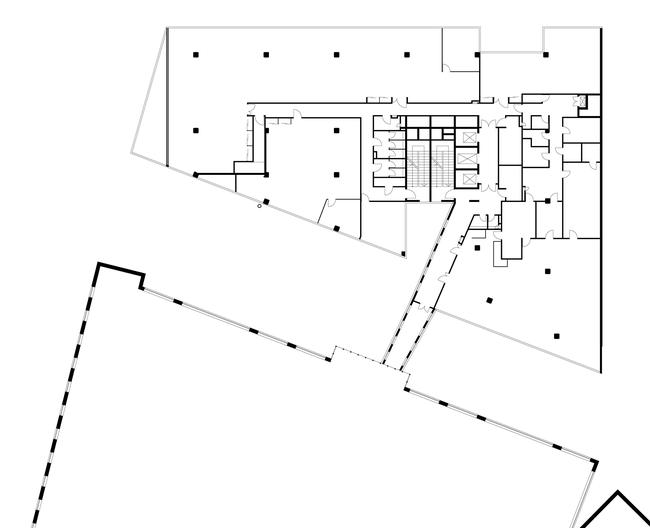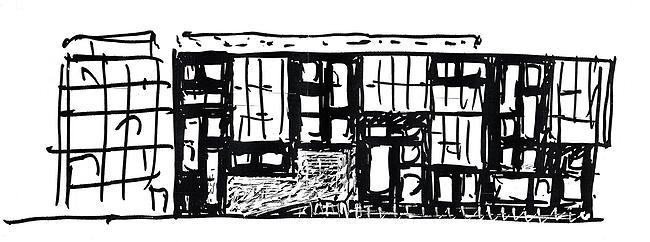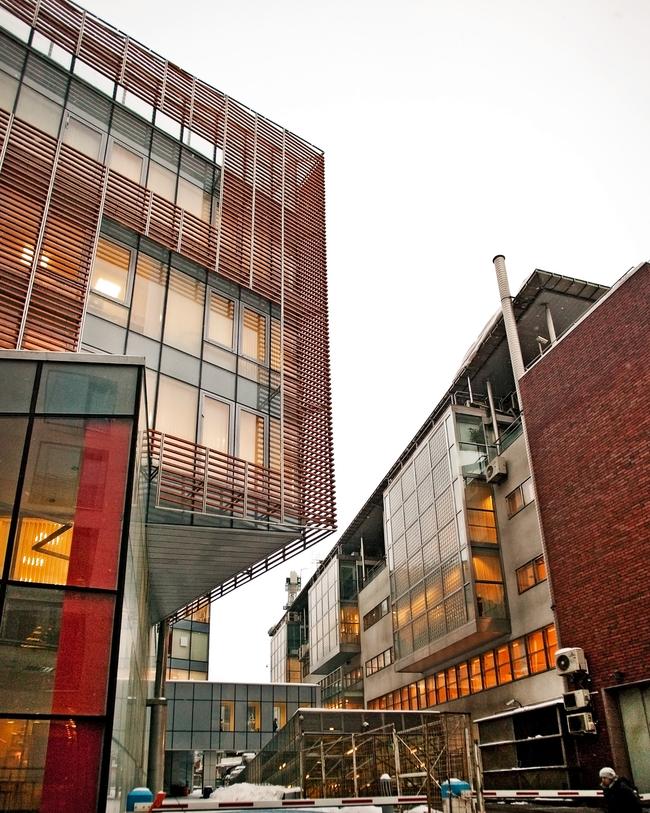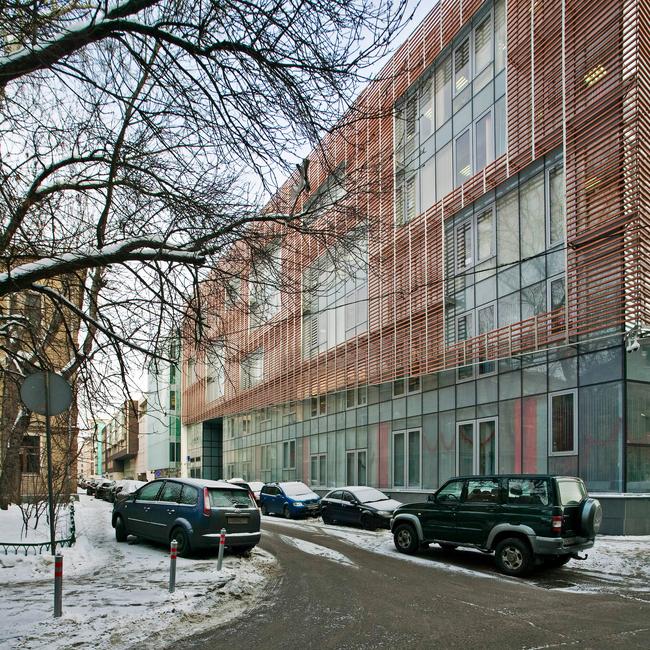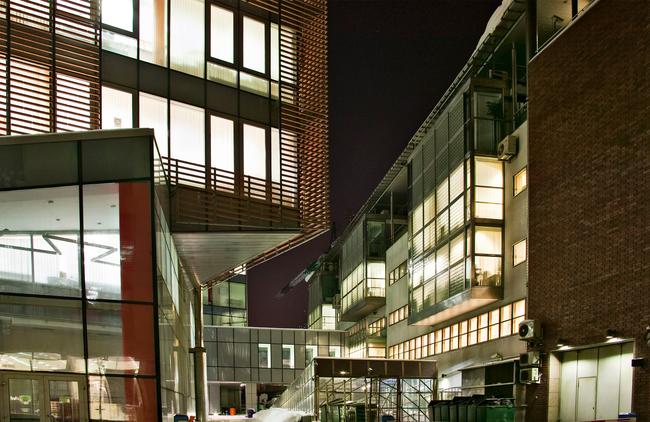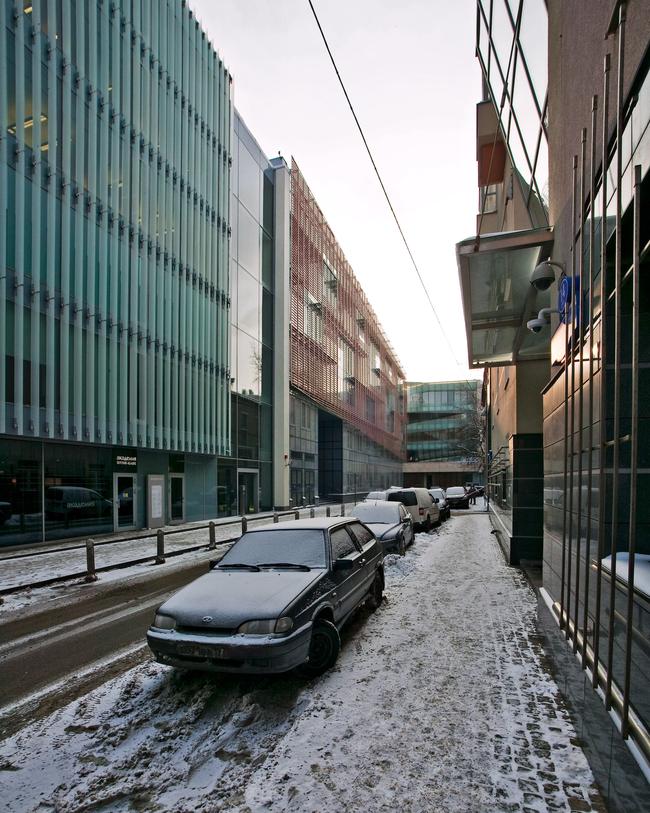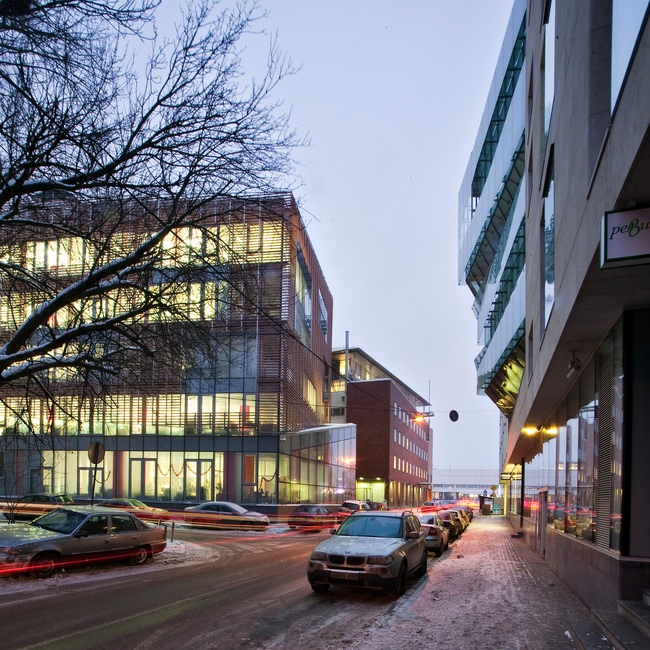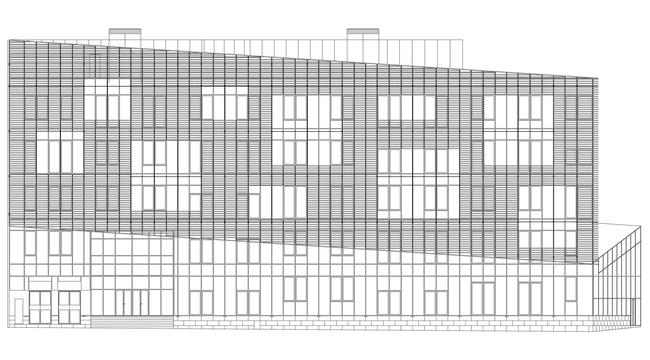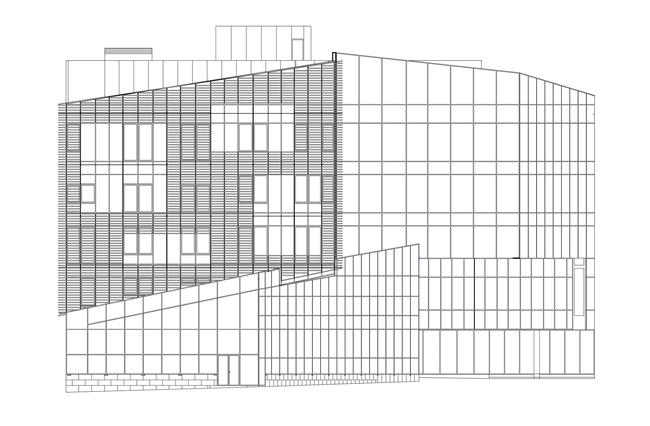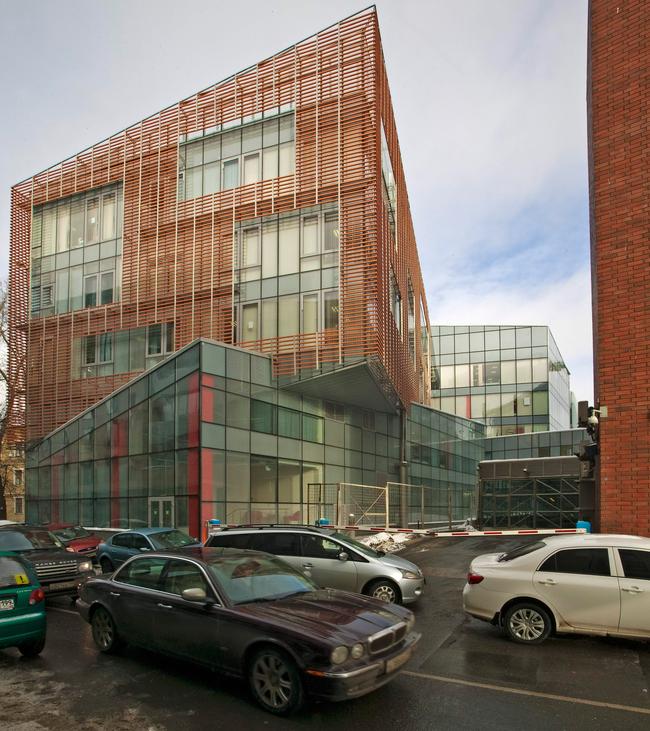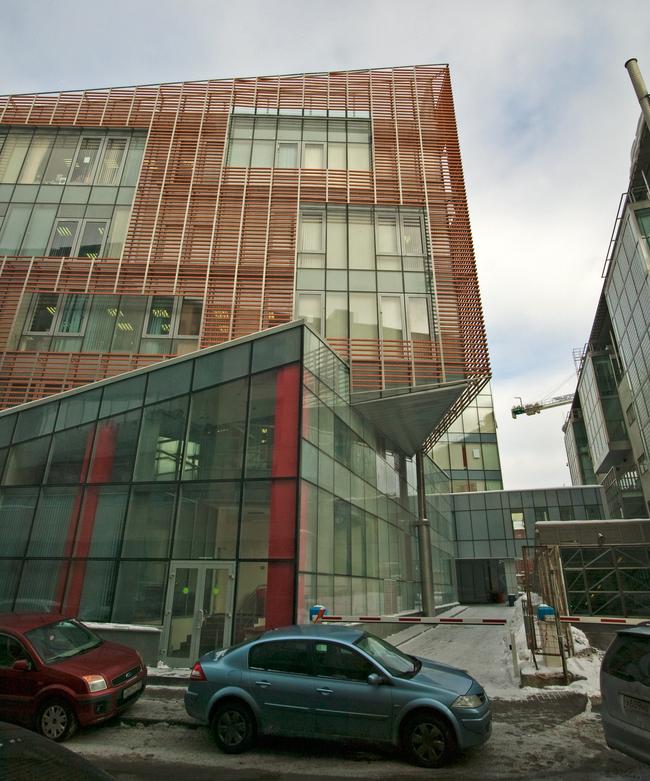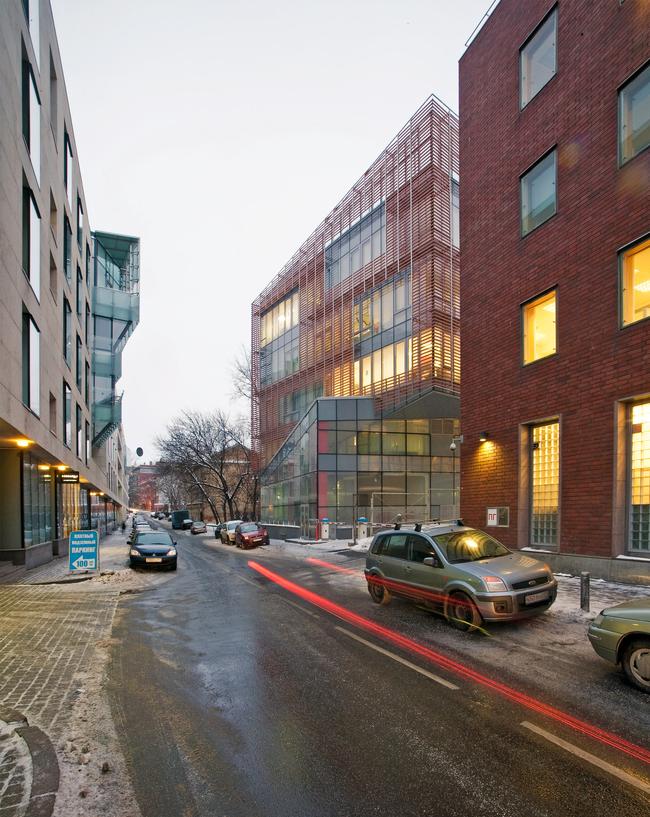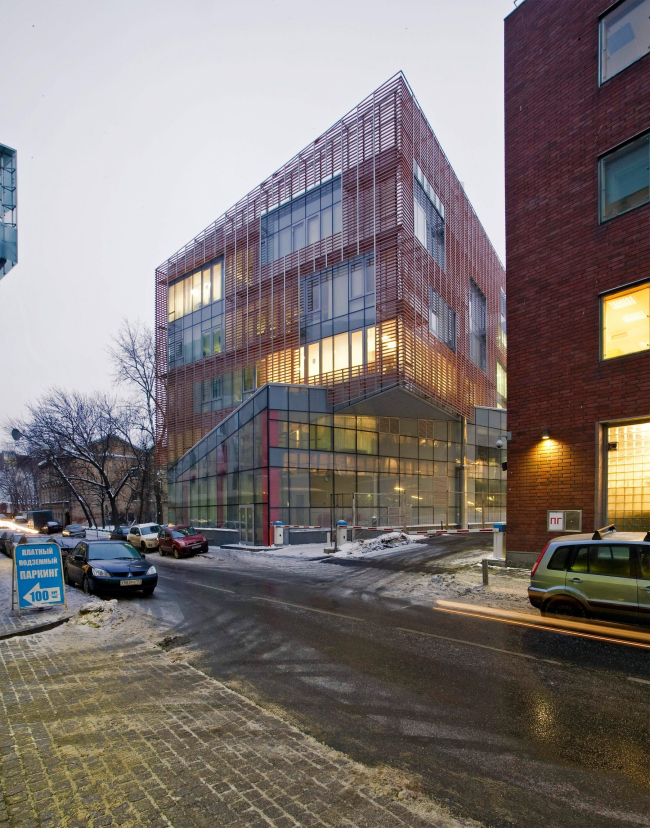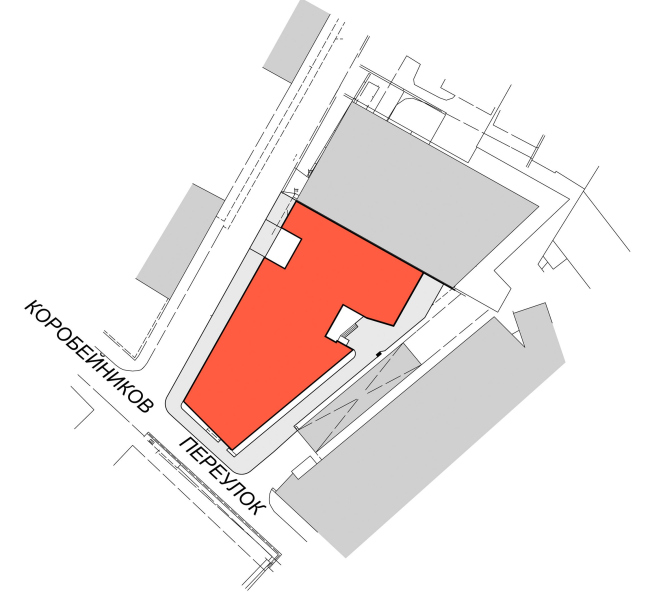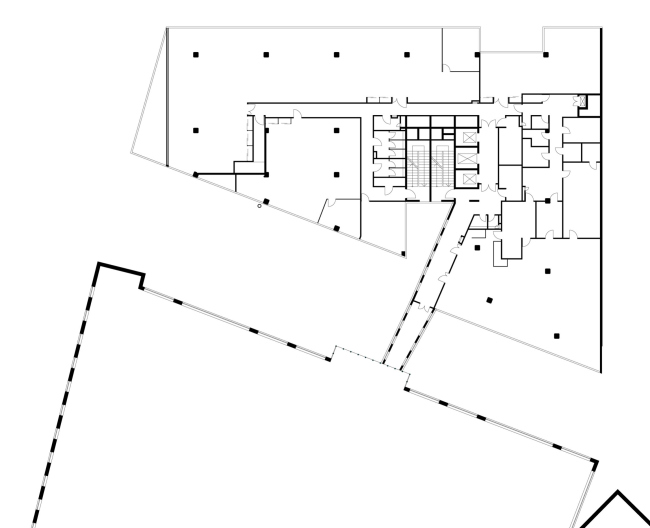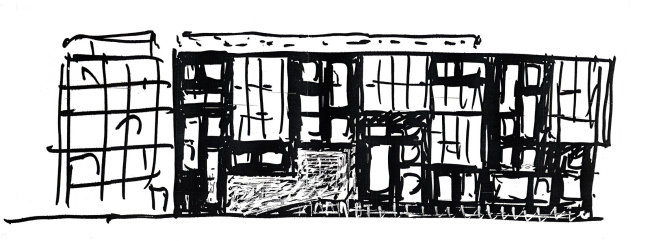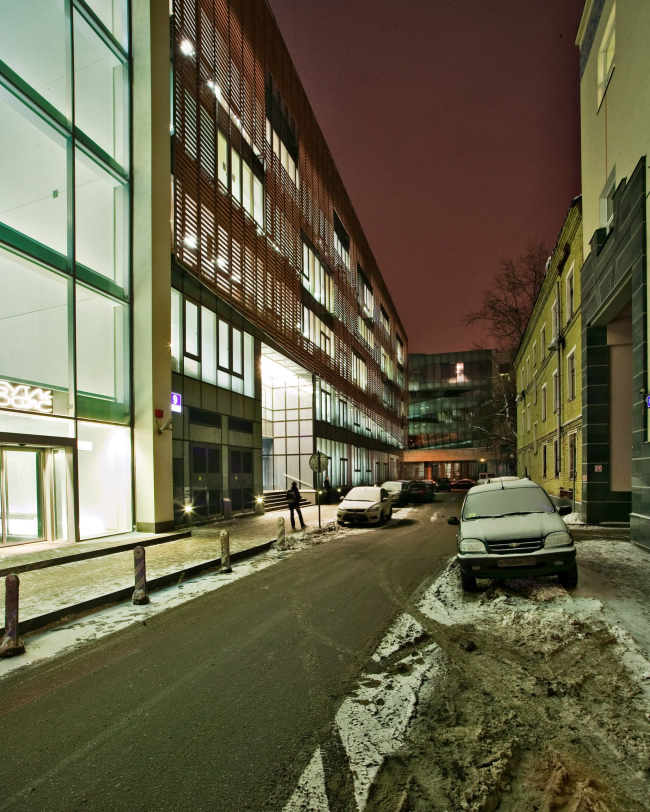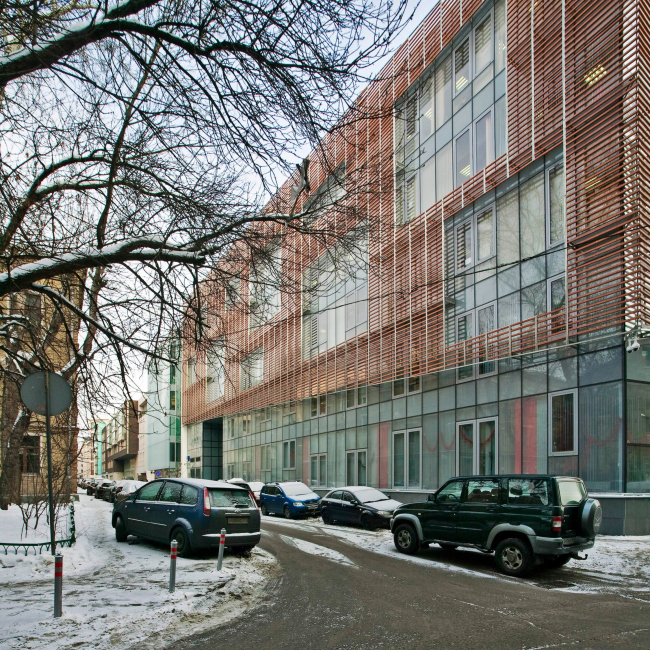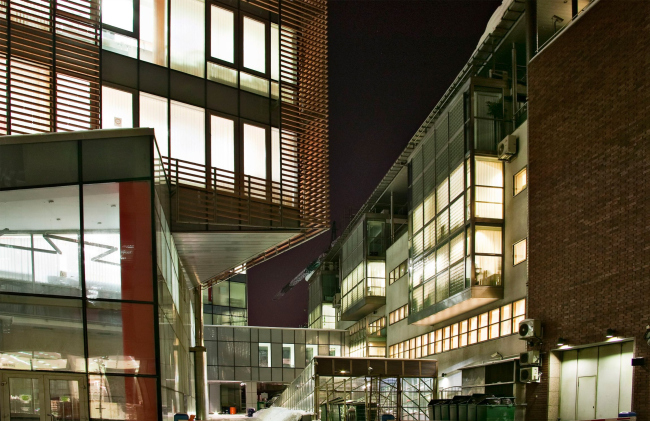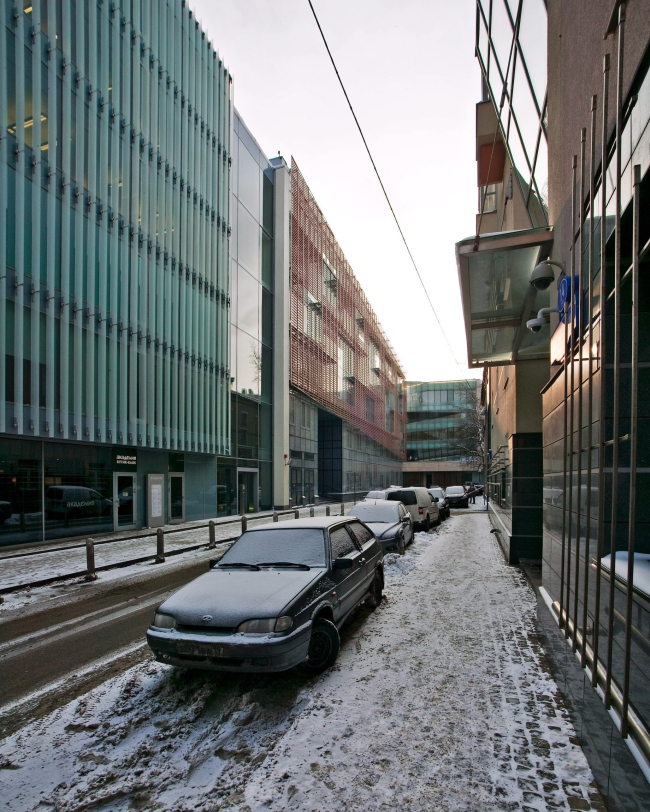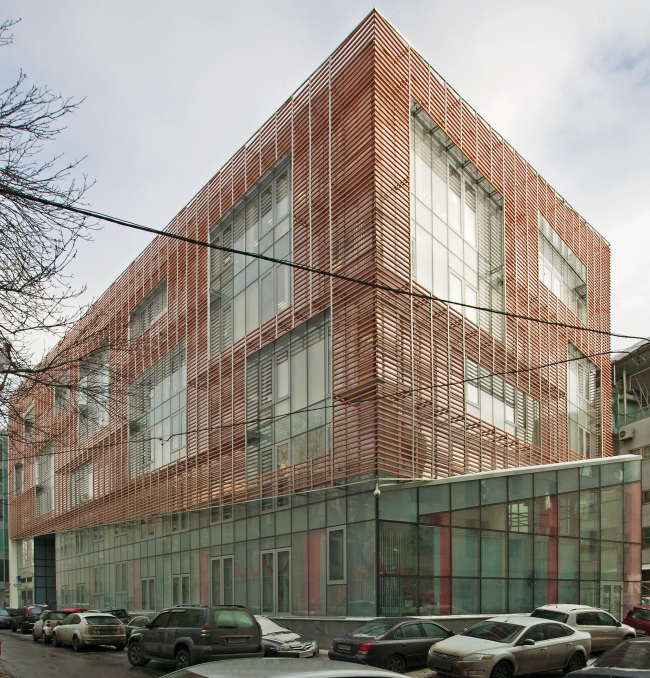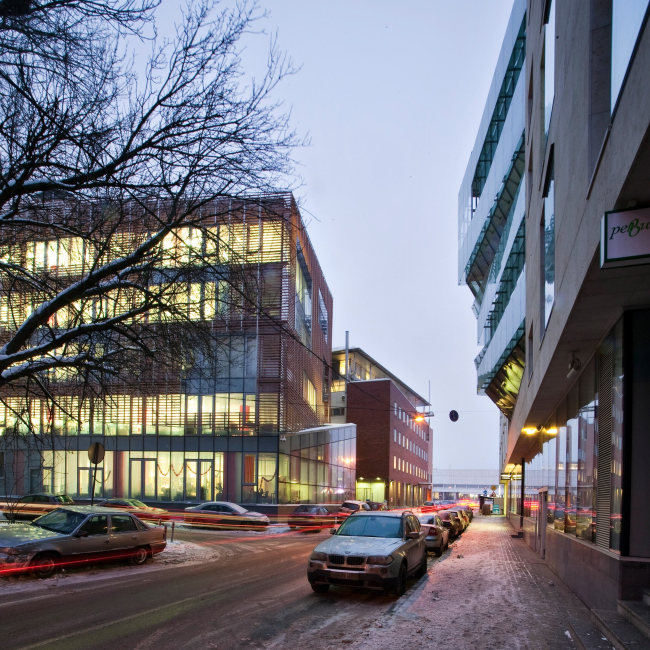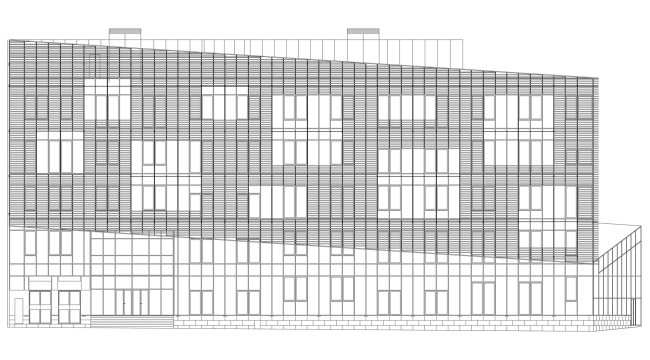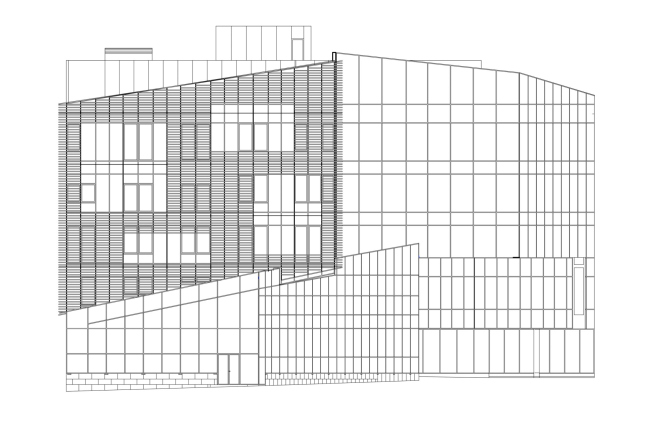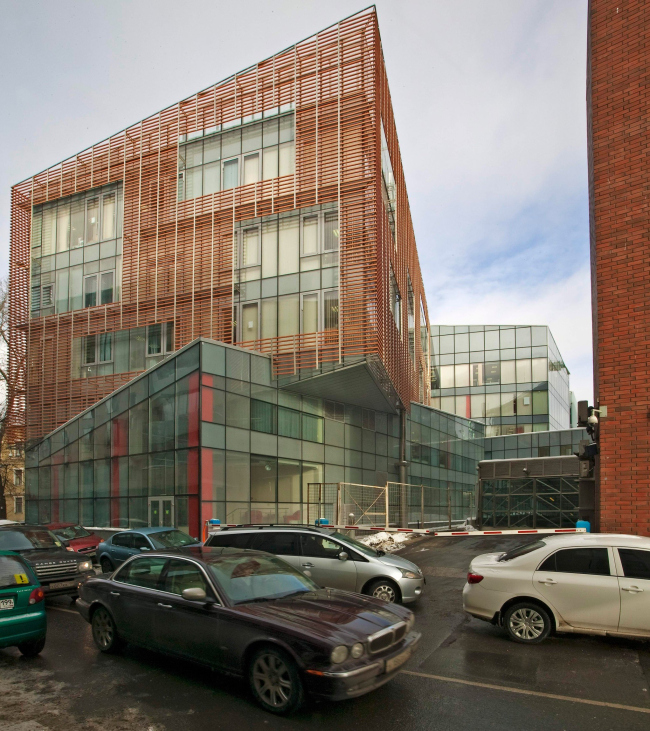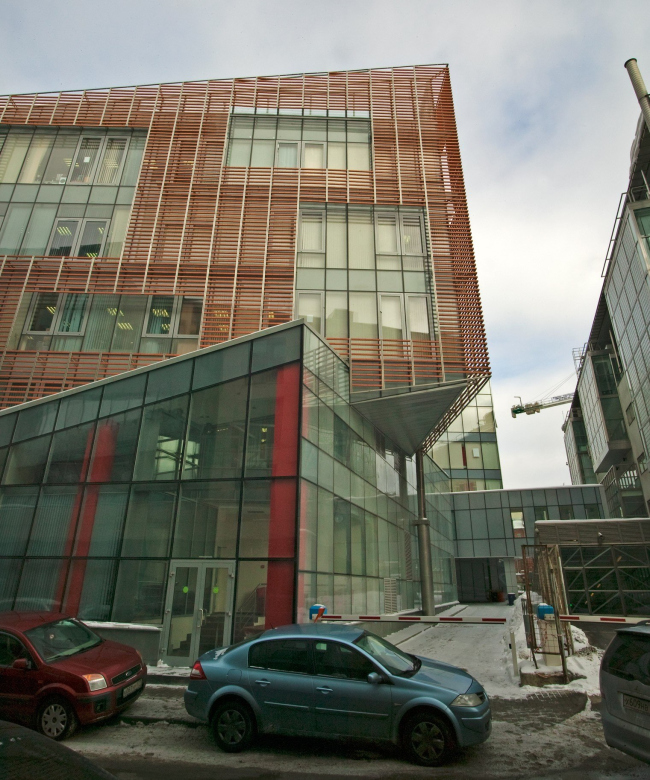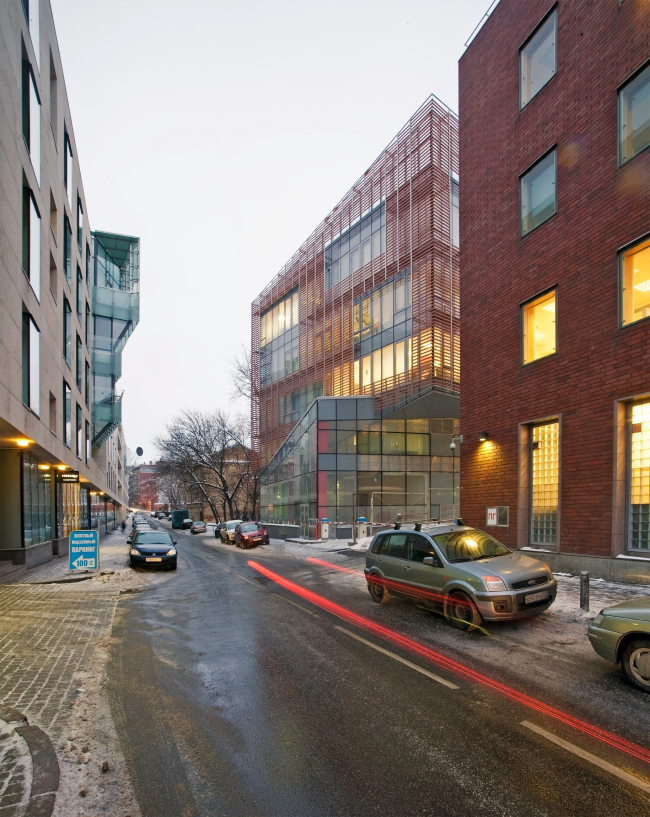|
Published on Archi.ru (https://archi.ru) |
|
| 14.03.2013 | |
|
A Different Ostozhenka |
|
|
Julia Tarabarina |
|
| Architect: | |
| Alexander Skokan | |
| Studio: | |
| Ostozhenka Bureau | |
|
Having responded to all the themes that were set by its architectural context, the new bank building in the Butikovsky Side-street still does not look lost amidst its neighbors. Quite the contrary: one can regard this new building as the old Ostozhenka's breakthrough into the company of the glamorous "golden mile". The new building of UniCredit Bank has been built at the crossing of
Korobeinikov and Butikovsky side-street. For those who has even the slightest
interest for the contemporary Moscow architecture, the specification of the
place alone means quite a lot: by the end of the 2000's, all the industry
publications were heatedly discussing this particular part of Ostozhenka area,
and, truth be told, it is this particular place that comes to mind when the
proverbial "golden mile" definition comes up in the conversation. On
the left, on the right, and diagonally across the street, one sees the
buildings by "Project Meganom" Bureau, and two houses by Sergey Skuratov
situated a bit further away. Nearby, a bit deeper into the site, stands the
first building of UniCredit Bank (back in those days it was called
"International Bank of
Office building in the Butikovsky Side-street, 9. Master plan.
Office building in the Butikovsky Side-street, 9. Left: new building, right: building of 1995. 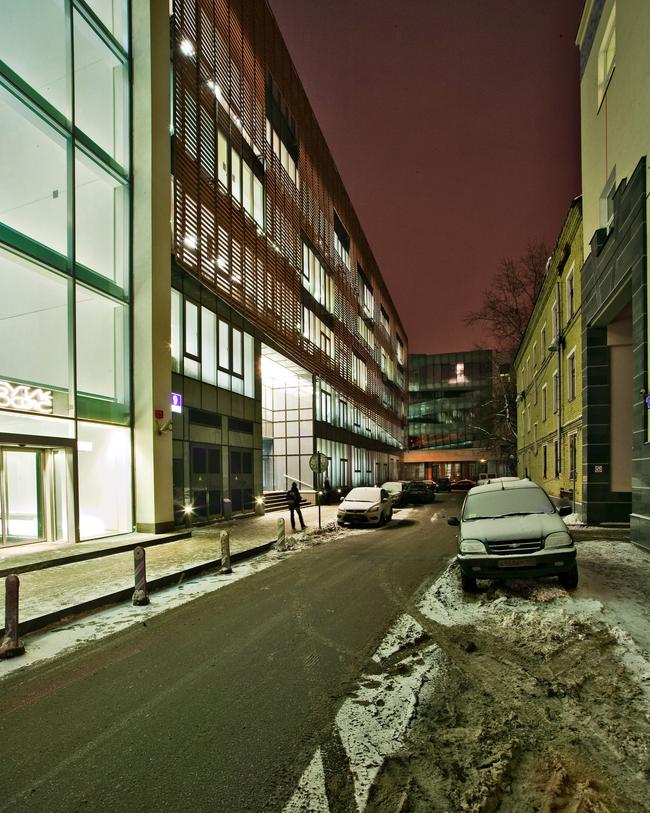 Office building in the Butikovsky Side-street, 9. "UniCredit Bank, the former International Bank of The building, indeed, looks unusual. At first glance, one cannot even get it how the architects were able to dissolve such a huge thing in the space and in the air. Its surface is covered with ripples and the whole building looks like a ghost or maybe a 3D image of its own self. Not completely, but to a very large extent it seems to be devoid of its bulk. Besides, if we go past it and down to the river along the Korobeinikov Side-street, one cannot get rid of a feeling that the house is gently moving away from us, as if letting us by to the riverside.
Office building in the Butikovsky Side-street, 9. "Almost devoid of a bulk" does not mean with no bulk at all: the matter this bank building is made of, is, though thin, quite palpable - it is this matter that creates the effect of slight flexibility and at the same time the deluxe look of an expensive building. The effect is akin to a Chinese screen: one cannot see a thing behind it but at the same time it does not look like a blind wall at all, it is quite graceful and it is quite unobtrusive. Oh, one more detail: in the nighttime the whole building lightens up like a lantern.
Office building in the Butikovsky Side-street, 9. This "transparent non-transparency" is the result of the fact that the glass facades covered with the fine dots of silk-screen printing from the side of the street are covered with the grilles of the horizontal ceramic lamella: thin stripes of terra-cotta color. The striped canvas is pierced in some places by the large rectangles of pseudo "windows" that are larger than the usual windows, ones that you might expect in such a building, by two or three times. The decorative openings are asymmetrically scattered over the facades; they liven up their rhythm and make it more sophisticated, at the same time adding to the likeness to a "usual building", one falling in with the archetypes of the city, according to which the buildings are to have windows in them.
Office building in the Butikovsky Side-street, 9. 3D model. The brick-red color of the lamellae fits the tone of the "old"
(1995) building on the embankment and provides the integrity of the ensemble of
the two buildings, as well as for their "contextual respectability":
after all, we are downtown, and the terra-cotta color is one of the most
"historical" ones. The stripes also fit the context: nearby, on the
Butikovsky Side-street, there stands a house built by "Project
Meganom", covered with vertical lamellae from top to bottom (even more
transparent-looking; the horizontal strokes of the "Ostozhenka" building
is more palpable in comparison to it, which makes sense because these strokes,
among other things, need to "hold the corner" of the street, and this
is quite an important task to do).
Office building in the Butikovsky Side-street, 9. View from the Butikovsky Side-street. On the left: "Meganom Bureau" building in the Butikovsky Side-street. Ahead in the distance: the residential house and its glass "villa". 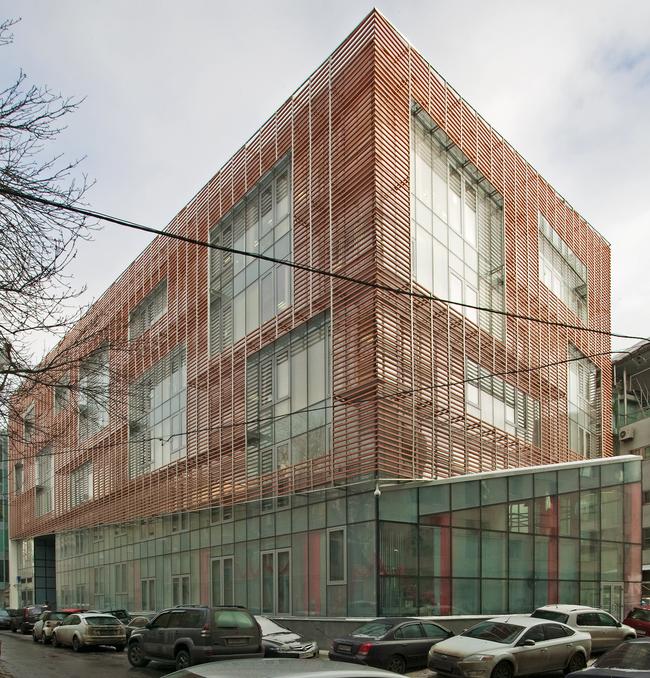 Office building in the Butikovsky Side-street, 9. The said corner - the crossing of Korobeinikov and Butikovsky side-streets - is definitely the most important one in the entire building. It virtually plays the part of its main facade, it "business card": it is the first thing that catches the eye of a passer-by who walks off the Ostozhenka and down the Korobeinikov side-street. All the right-hand side of the side-street is filled with a house that was built (just like the above-mentioned lamellae hose) by Yuri Grigoryan - the long bulk of the building wrapped in a thick layer of mortar "holds" the line of the side street. Аnd, directly above the crossroads, at a third-floor level, the surface of the wall shouts off with a glass volume of a "city villa" inserted into the house. Its glass "iceberg" appeared back in the days when the crossing of the Butikovsky and the Korobeinikov side streets was still empty. And now in order to keep this part of the side street from looking gloomy and constrained, the "Ostozhenka" architects had to retreat before the energetic mass of glass.
Office building in the Butikovsky Side-street 17-19. View from the Korobeinikov Side-street from the Ostozhenka side. By doing so, they were able to "fool" the perspective with the
play of lines and shapes. To cut a long story short, the lines of the top and
bottom edges of the terra-cotta screens before the facades are not parallel to
the ground. They rise diagonally up to the crossroads, fully capturing a whole
floor, and it turns out that the corner of the building that faces the
crossroads is lower, while the other corners "fly up" very much like
the wings of a paper butterfly or maybe a melancholic smile stylized into a
triangular check mark.
Office building in the Butikovsky Side-street, 9.
Office building in the Butikovsky Side-street, 9. Peculiar is the fact that while along the Butikovsky Side-street this
technique is implemented in a linear and decorative fashion with the lower
outline of the striped screen being cut diagonally and continuing the linear
play that is there in the glass volume of the "villa", on the side of
the Korobeinikov Side-street, the terra-cotta wall breaks away from the red
line turning about twenty degrees to the left. The basement of the building at
the same time stays firmly in its place; the two volumes veer off from one another
like the steps of a spiral staircase would or the shelves of a whatnot that
rotates on a pivot. Besides, as we go further down the side-street, the
basement floor grows into being actually a double-height one, turning up its
pointed "nose".
Office building in the Butikovsky Side-street, 9.
Office building in the Butikovsky Side-street, 9. If we are to look at this building from the riverside, from that
standpoint it will look like it is made up of two volumes put on top of one
another with a diagonal shift - the terra-cotta corner overhangs above the
basement, and the play of lines turns into a whole 3D composition. But what is
interesting is the fact that the surface of the terra-cotta grille from this
standpoint looks like the immediate continuation of the brick wall of the old
bank building, it is at this particular point that the similarity of the two
buildings is particularly obvious. This similarity is not to be overestimated
though: the "strokes" of the new building are a lot more
sophisticated and transparent, and the line of its cornice continues the
perspective play, this time strengthening the contraction and making the street
a little bit shorter (of course, it only looks that way).
Office building in the Butikovsky Side-street, 9. As a result, the space of the Korobeinikov Side-Street stratifies: its lower part is still dominated by the red line, while the upper part veers off to the left. The volume of the glass "villa" and the volume of the bank are engaged in a silent dialogue: one offends and the other retreats but it does so not only with dignity but it looks like it really knows what it is doing - it sets a new direction of space, yet new for this street: a little bit more on the left side and a little bit higher - a virtual "Stairway to Heaven"! In any case, if you walk down the street without taking your eyes off this building - and this effect has been proven - that the steep descent of the pavement will feel really unexpected to you and even inappropriate. You will feel like jumping up! The bank building has yet another peculiarity: not only does it carefully reflect its environment but it also looks different from the surrounding houses, significantly different. First of all, it has become a common cliché to blame the Butikovsky of having become a "dead" street - few residential houses are left there at all, and this street is roamed mostly by the security guards. To tell the truth, the architects are not to blame for this at all, but still what ended up happening was a rather strange environment. The new bank building, on the other hand, is a living and breathing thing, it works, and it has value - like a workhorse opposed to some unnecessary luxury. Second of all - and this is a plastic difference already - the building
opposes itself to the neighboring houses with their respectable stones and
their traditional bricks, with their serious and pompous
"sturdiness". The new building, unlike its neighbors, sports a look
of being a tiny bit incomplete: instead of self-contentedly presenting itself,
it turns away, withdraws, and covers itself with a stroke sketch. The
asymmetric openings of the variously-sized "pseudo-windows" in the
thin fabric of the lamellae look, on the one hand, like a torn-up cloak, and on
the other hand, it looks like the old NoneNoneNoneNoneNoneNoneNoneNoneNoneNoneNoneNoneNoneNoneNoneNoneNone |
|

